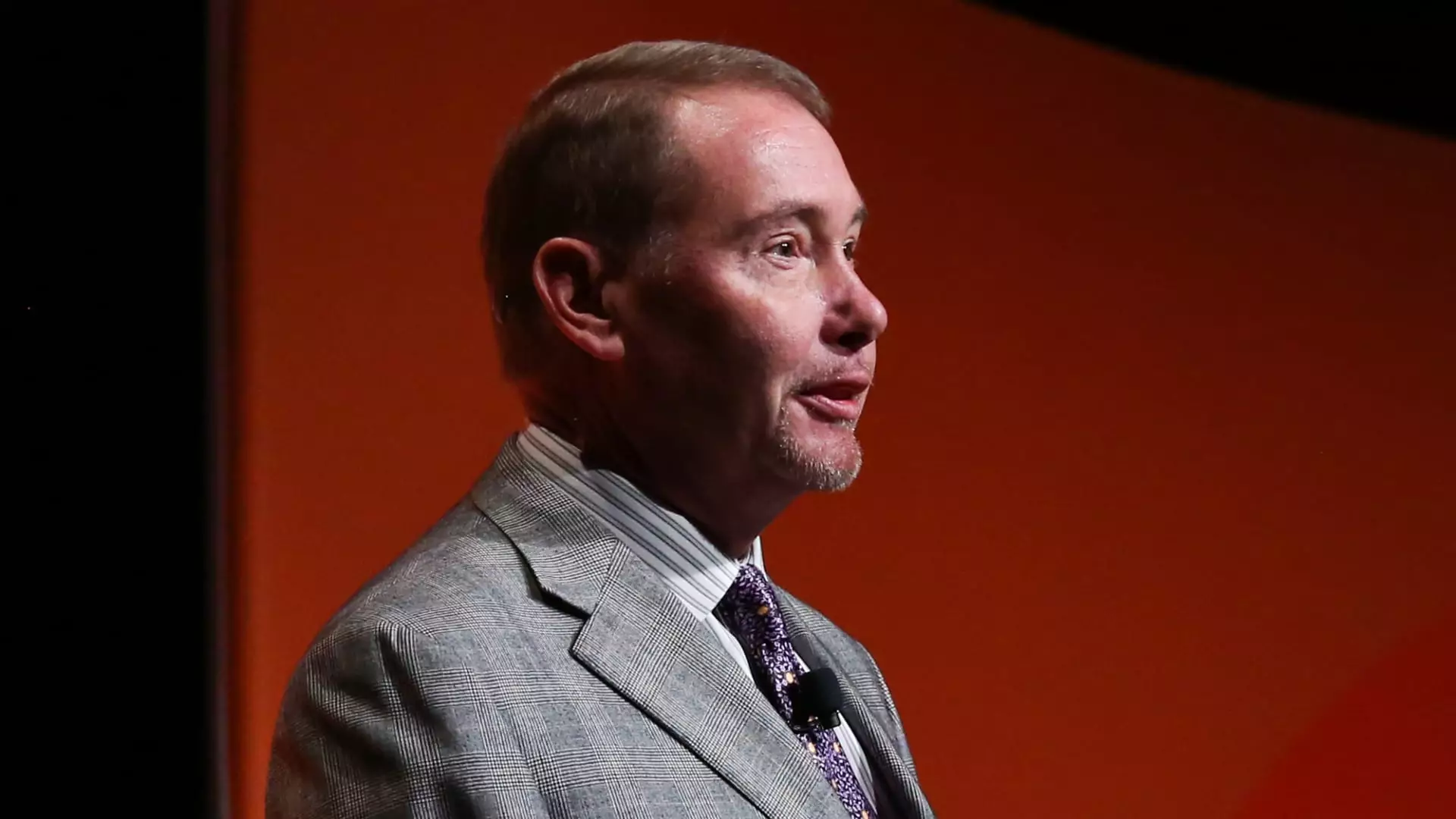In a recent webcast, Jeffrey Gundlach, the CEO of DoubleLine Capital and a prominent figure in the fixed-income investment landscape, offered a scathing critique of the Federal Reserve’s current approach to monetary policy. Operating within an economic landscape characterized by unpredictable inflation, Gundlach depicted the Fed’s actions as reminiscent of the character Mr. Magoo—clumsy and reactive rather than strategic and visionary. As the Fed toys with its responses to inflation, the implications for financial markets and the economy warrant a thorough examination.
Gundlach highlighted a troubling inconsistency in the Federal Reserve’s strategy: despite achieving a decrease in inflation rates, the recent uptick in consumer prices over the past five months suggests a burgeoning challenge. The consumer price index (CPI) witnessed a seasonally adjusted increase of 0.4% within the month, bringing the year-over-year inflation rate to 2.9%. Although the core CPI, excluding volatile food and energy prices, was somewhat less alarming than anticipated, these figures underscore the Fed’s ongoing struggle to meet its inflation target of 2%. Gundlach’s observation that the Fed seems to be ‘zig-zagging’ in response to short-term data reflects a concerning trend of immediate reactions that could overshadow the larger context of economic shifts.
The Importance of a Long-Term Perspective
What Gundlach appears to advocate is a measured, long-term approach rather than the erratic, short-term adjustments that have characterized the Fed’s recent behavior. He points out that the market has transitioned from expecting aggressive cuts in interest rates to a more cautious outlook, anticipating only a single cut in 2025. This shift in market sentiment could indicate a lack of confidence in the Fed’s capacity to stabilize inflation and steer the economy successfully. Consequently, Gundlach’s perception of the Fed as reactive rather than proactive prompts critical questions about the structure and effectiveness of its current monetary strategy.
Past adjustments by the Fed, such as the full percentage point cut since September and the decision to lower rates by half a point in one sitting, are reflective of an organization grappling with economic realities. Yet, the Fed’s reduced forecast of rate cuts—now suggesting only two quarter-point reductions in 2025—appears to align the central bank closer with market expectations. Gundlach’s assertion that the Fed is finally ‘in sync’ with market movements implies potential stagnation in innovative monetary policy strategies. This could lead to a lack of responsiveness to further shifts in the economic environment.
Ultimately, Gundlach’s critiques of the Fed underscore a pressing need for policymakers to adopt a broader perspective that transcends immediate data points. The balancing act between reacting to current inflationary pressures and maintaining a strategic foresight is delicate and pivotal. As the Federal Reserve navigates these tumultuous waters, it must avoid becoming ensnared in the trap of short-term thinking that could hinder long-term economic stability and growth. In a world where financial markets are deeply interconnected, the consequences of the Fed’s missteps can reverberate well beyond domestic borders, emphasizing the need for a carefully calibrated approach to monetary policy.

